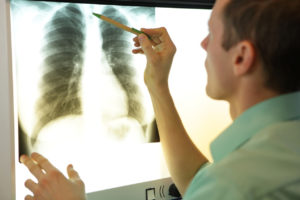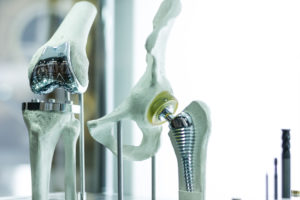 Seatbelts, air bags and other vehicle safety mechanisms have dramatically reduced car crash related fractures. They still do occur, though, typically in the most violent of crashes, which I suspect you know only too well because you are reading this.
Seatbelts, air bags and other vehicle safety mechanisms have dramatically reduced car crash related fractures. They still do occur, though, typically in the most violent of crashes, which I suspect you know only too well because you are reading this.
Seatbelts are effective in preventing your body from flying around the vehicle, striking the dashboard, windshield, and other occupants. Violent forces are still exerted on the body, though, because there are only two strips of seatbelt holding you in place.
Compression or other fractures to the bones of the spine can occur as your head, and the side of your upper body not strapped in, are flung around while the rest of you is strapped in; fractures to the hip and pelvis can occur when your body is held, by seatbelt points at your hips, from moving to the side in a side-impact crash; and lower spine fractures can occur as your legs/pelvis fly forward while the rest of your lower body is held back by the lap belt.
We have handled cases where complex fractures to the feet and legs have occurred as a result of the passenger compartment not being maintained or because of extreme forces caused to a leg that is pinned on the brake when vehicles collide. Fractures to the hands and arms can occur when the steering wheel is being tightly gripped at the time of an impact.
There is no end to the types of fractures that are possible in a violent automobile crash. A fracture is only a part of the injury story.
Fractures do not occur in isolation. Every fracture is accompanied by some level of damage to the tissues connected to the fractured bone. Often, the connective tissues and joints sustain the most “serious” damage (“serious” defined by how long an injury takes to recover), and often those injuries never achieve a complete recovery.
 There are two main stages to medical care for a fracture. The first stage is the repair and/or reconstruction of the bones. This might or might not require surgical intervention, and if surgical intervention is required, it might be required more than once. This stage always takes time – time for the bones/bone fragments to reunite. The second stage is rehabilitation, restoring strength and mobility to muscles and tissue that have been largely dormant, waiting for the bones to heal.
There are two main stages to medical care for a fracture. The first stage is the repair and/or reconstruction of the bones. This might or might not require surgical intervention, and if surgical intervention is required, it might be required more than once. This stage always takes time – time for the bones/bone fragments to reunite. The second stage is rehabilitation, restoring strength and mobility to muscles and tissue that have been largely dormant, waiting for the bones to heal.
At Hergott Law, we work to assist you as much as possible in achieving the mutual goal of maximizing your recovery, and doing so as quickly as this goal can be accomplished. Maximum Medical Recovery (MMI) is that point of recovery where your medical team agrees that it is unlikely that you will recover any further. Up until that point, there is optimism that some further therapy, or the passage of time, will result in further recovery. It is not until MMI is reached that the value of a claim can responsibly be assessed. To assess your losses before MMI is reached requires relying on an optimistic prognosis that may or may not be achieved.
There are excellent orthopaedic surgeons in every community. Just like in every other field, though, some orthopaedic surgeons specialize and gain a high reputation for having specialized skills and experience dealing with particular orthopaedic issues like shoulders, knees, hips, ankles, etc. We can have you assessed by such very highly specialized surgeons, with the expense paid by ICBC or another defending insurance company as “costs” at the conclusion of your claim. An assessment by a very specialized surgeon might result in additional care/surgical recommendations that could further increase your level of recovery, and might also identify future complications that would not otherwise have been identified.
Our most critical role is assessing and proving your likely future losses once you reach Maximum Medical Improvement. Those losses might include ongoing care expense, ongoing pain, discomfort and loss of enjoyment of your life, and loss of your capacity to earn income. We build your case so that if ICBC or another insurance company refuses to pay fair compensation for those losses, we can put your case before the Court for assessment.

